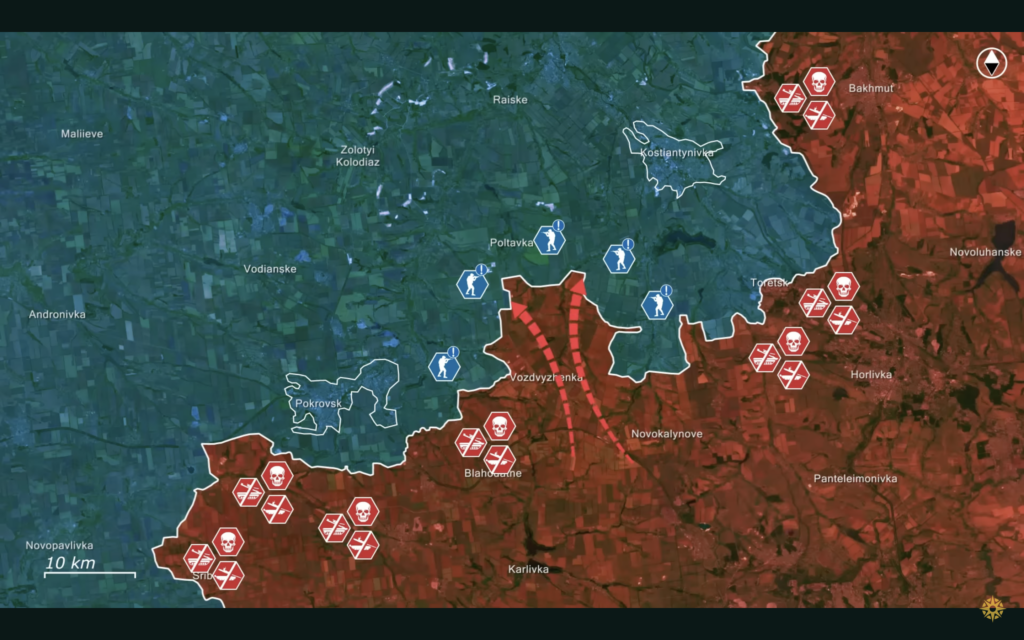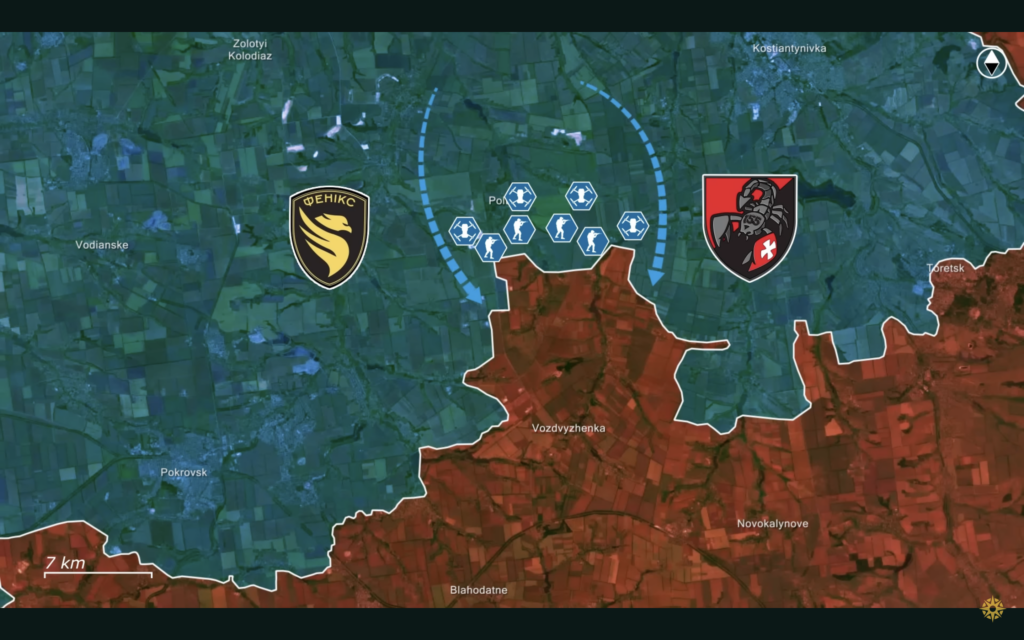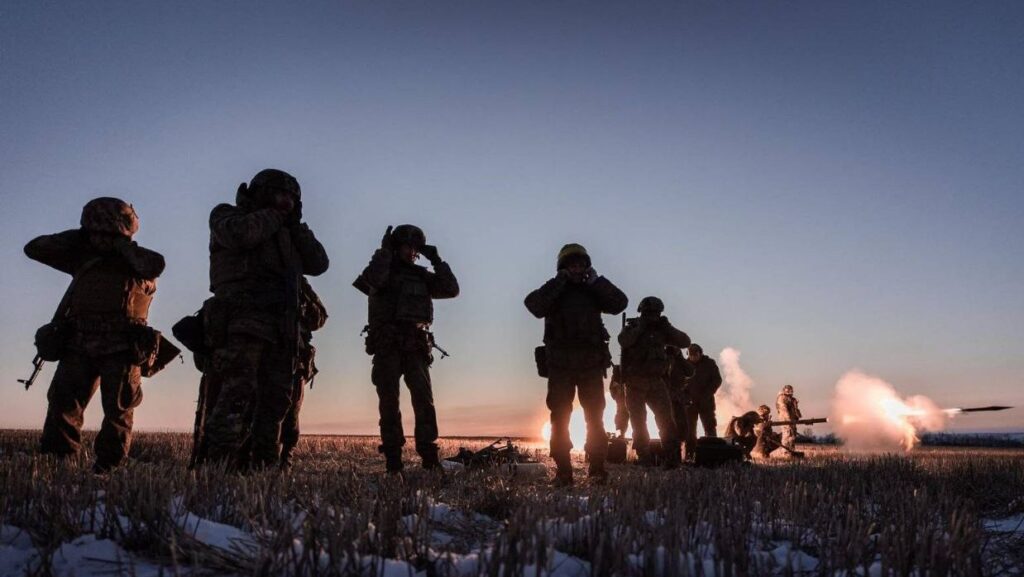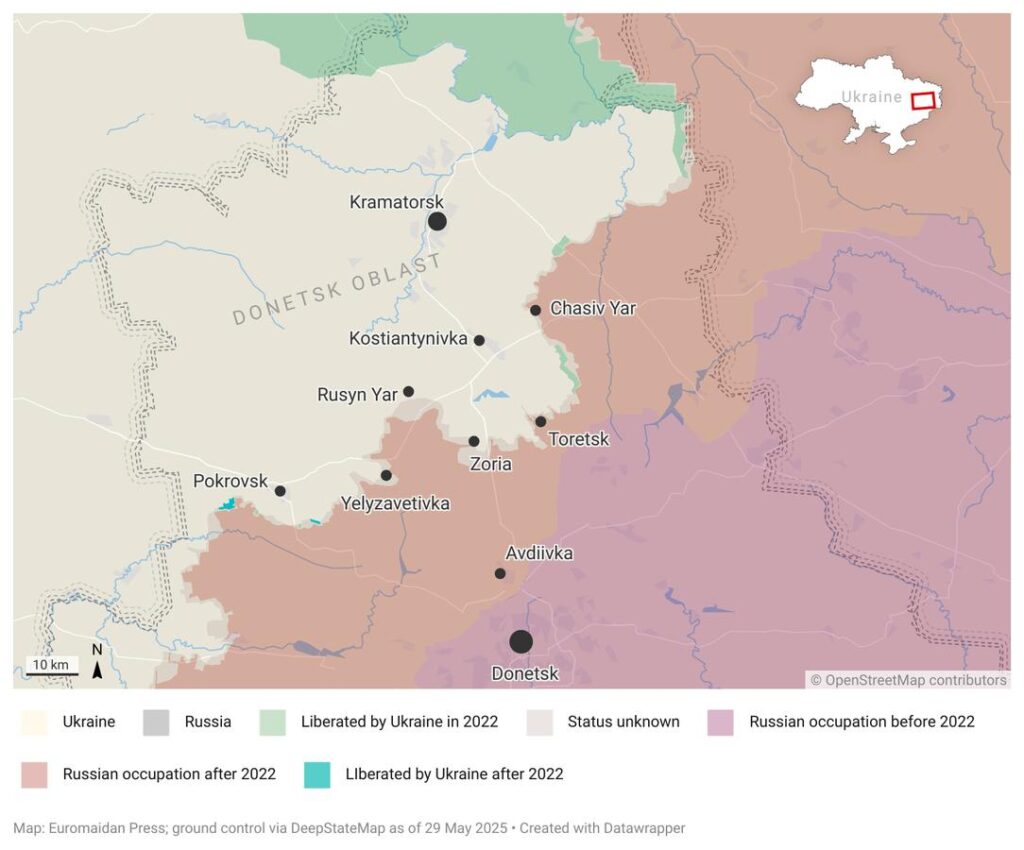WSJ: Russia wants the West to believe it’s winning in Ukraine

Russia made more territorial gains in Ukraine in May 2025 than in nearly any month since the end of 2022, but the Kremlin’s aim is not only battlefield progress but also to shape perceptions in Western capitals, making a Russian victory appear inevitable and discouraging future support for Ukraine, The Wall Street Journal reported.
Kremlin intensifies multi-front assaults to create momentum
WSJ reports that the Russian offensive has expanded across several fronts, with the Kremlin probing for weaknesses while forcing Ukraine to defend along the entire 1,000 km front line. Moscow seeks to exploit its manpower advantage and the onset of summer foliage, which hampers Ukrainian drone visibility.
George Barros, an analyst with the Institute for the Study of War, told WSJ:
“The center of gravity for this war is not terrain—the place where it’s being decisively waged is the perception space in Western capitals.” He added, referring to the Russian reasoning behind the strategy: “If the map is moving, they’re able to say, ‘We’re making progress. Ukraine is screwed. How many more billions are you going to spend?’”
Putin counting on US fatigue to win what his army cannot, WP op-ed argues
Kostyantynivka becomes key focus in eastern Ukraine
In Donetsk Oblast, Russia has shifted troops toward Kostiantynivka from Pokrovsk, surrounding the city on three sides. The city, a vital logistics hub, is under increased attack. A senior Ukrainian lieutenant fighting in the area told WSJ: “The city is rapidly transforming into a front line.” He also warned of frequent, precise Russian drone strikes enabled by fiber-optic drones capable of traveling up to 40 km — double their range a year ago.
Russian airstrikes intensify on Ukrainian second defensive line northeast of Pokrovsk
Northern front sees renewed Russian push toward Sumy
In Ukraine’s north, Russian troops have entered Sumy Oblast after amassing over 50,000 soldiers. According to WSJ, one Ukrainian sergeant in the region said the Russians outnumber local troops roughly two-to-one. Russian forces appear to be attempting to seize Yunakivka and ultimately reach the regional capital of Sumy, located less than 30 km from the border.
Even where Russian forces have not advanced, assaults continue to fix Ukrainian forces in place. A Ukrainian captain in the Pokrovsk area told WSJ that Russian attacks happen at all hours:
“They want to reach the border with Dnipropetrovsk Oblast—it’s important to them symbolically.”
Russia captures Sumy’s Kostiantynivka village as Russians try to widen frontline in region
Zaporizhzhia buildup raises concerns of wider offensive
Ukrainian officials and sources familiar with the matter told WSJ that Russia is also increasing its troop presence in the Zaporizhzhia Oblast. Ukrainian special forces have been sent there to reinforce defenses.
A senior lieutenant near Kostiantynivka summarized the toll of the ongoing campaign:
“We anticipate worsening conditions across all directions this summer. Personnel are exhausted. There are not enough rotations. Everyone is operating at the edge of their limits.”















